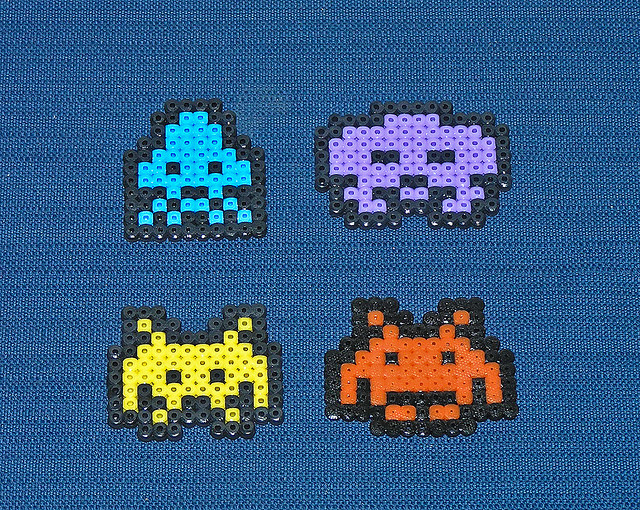 PBS Newshour | Teaching computers how to play Atari better than humans.
PBS Newshour | Teaching computers how to play Atari better than humans.
This version of Atari’s “Space Invaders” isn’t being played by a person, but a system of computer algorithms that is learning how to play it just by looking at the pixels on the screen.
![]() related reading:
related reading:
PBS | Newshour
PBS | YouTube channel: main
PBS | YouTube channel: Newshour

![]() full transcript:
full transcript:
GWEN IFILL: Playing video games might seem like child’s play. But as Tom Clarke of Independent Television News reports, it’s also at the frontier of artificial intelligence.
TOM CLARKE: It was the late 1970s, and for the first generation of video gamers, Atari was king. By the standards of the day, the graphics were mind blowing.
The sound was out of this world. And the selection of games just went on and on and on. Compared to the video games of today, Atari looks pretty clunky.
The games are still quite difficult to play, especially if you haven’t picked one up for 30 years, like me. But it’s that exact combination of simple graphics, but quite challenging game play, that has attracted the cutting edge of artificial intelligence researchers back to the 1970s.

Atari “Space Invaders” played by a system of computer algorithms that is learning how to play by looking at pixels on screen. — credit | Atari
This version of “Space Invaders” isn’t being played by a person, but a system of computer algorithms that is learning how to play it just by looking at the pixels on the screen.
It may not sound like it, but it’s something of a breakthrough, the work of one of the finest young minds in AI research, North Londoner Demis Hassabis.
DEMIS HASSABIS, Vice President, DeepMind Technologies: We don’t actually give any clues to the system about what it is supposed to do in the game, what it’s controlling, how it gets a score, what’s valuable in the game, what the right strategies are. It has to learn all those things from first principles.
TOM CLARKE: Hassabis shows me his system playing the classic paddle game “Breakout.”
DEMIS HASSABIS: So now, about two hours in, now it can play the game pretty much as good as any human, professional human player could, even when it’s coming at very fast angles. And then we thought, well, that’s pretty good, but what would happen if we just left it playing for another couple of hours?
And then it did this unexpected thing where it found the optimal strategy was to dig a tunnel around the side and send the ball behind the wall, which is obviously the optimal strategy and the safest strategy.
TOM CLARKE: Out of 49 completely different Atari games tested, the system played more than half of them better than a human, a simple demonstration of what A.I. researchers call general nontrivial intelligence.
DEMIS HASSABIS: This is what the essence of intelligence is, is finding structure and meaning in your perception inputs, and then being able to act intelligently to make a plan using that model of the world.
TOM CLARKE: And that’s what this is?
DEMIS HASSABIS: And that’s what the system does, yes.
But it’s important to discuss some of the risks and make sure we’re aware of those. And it’s decades and decades away before we will have anything that is powerful enough to be a worry, but we should be discussing that and beginning that conversation now.
TOM CLARKE: They have been around since the 1970s, and the machines haven’t taken over yet — but humanity, watch this space.

